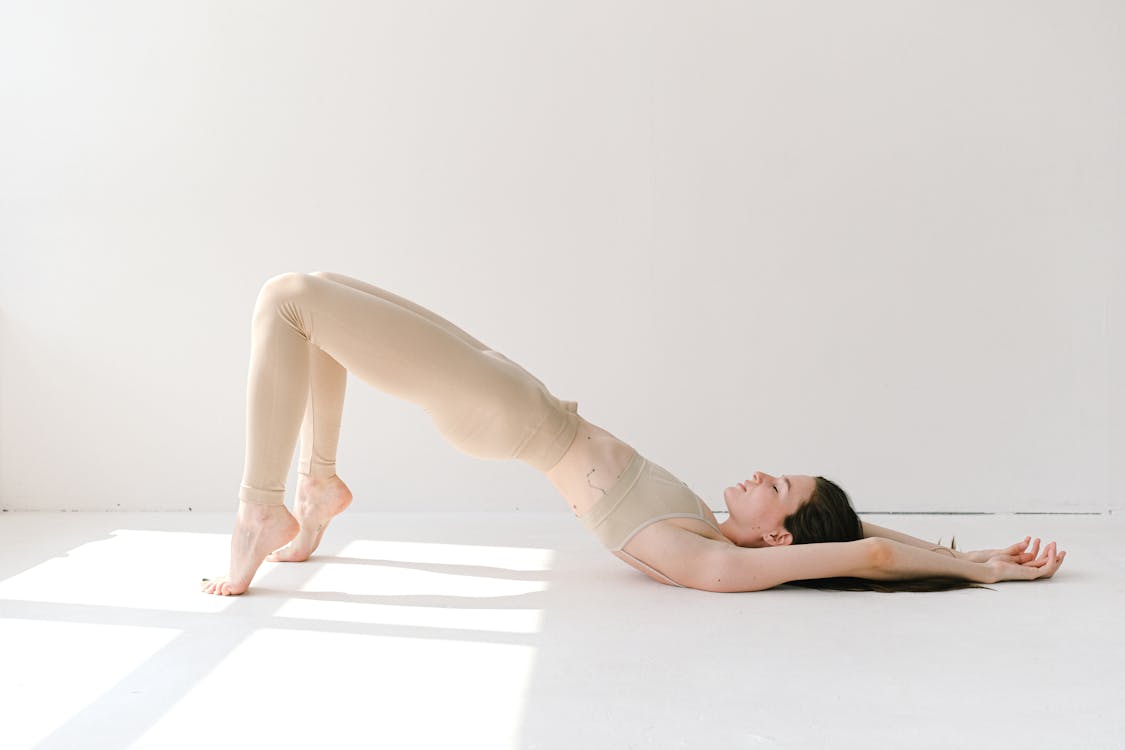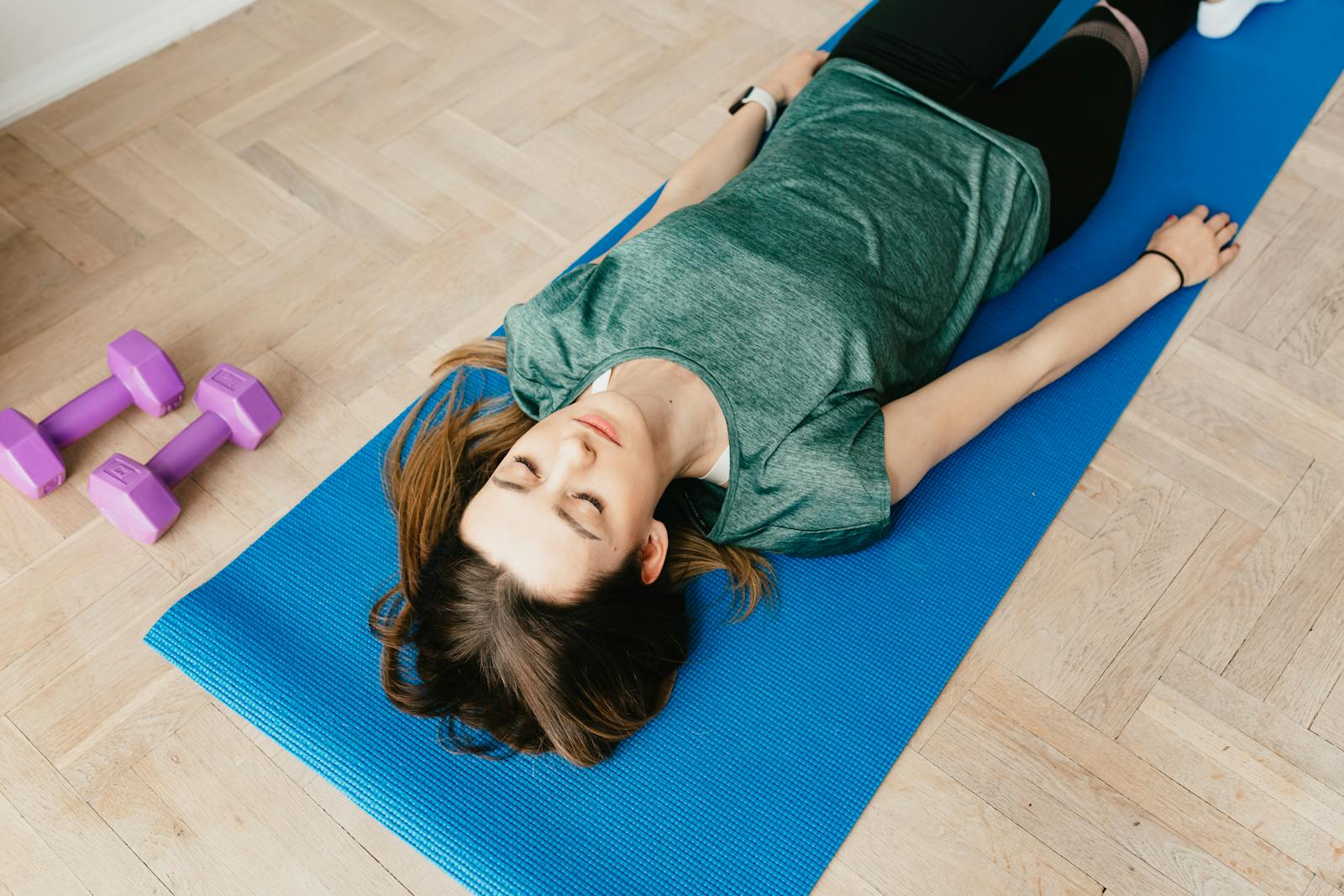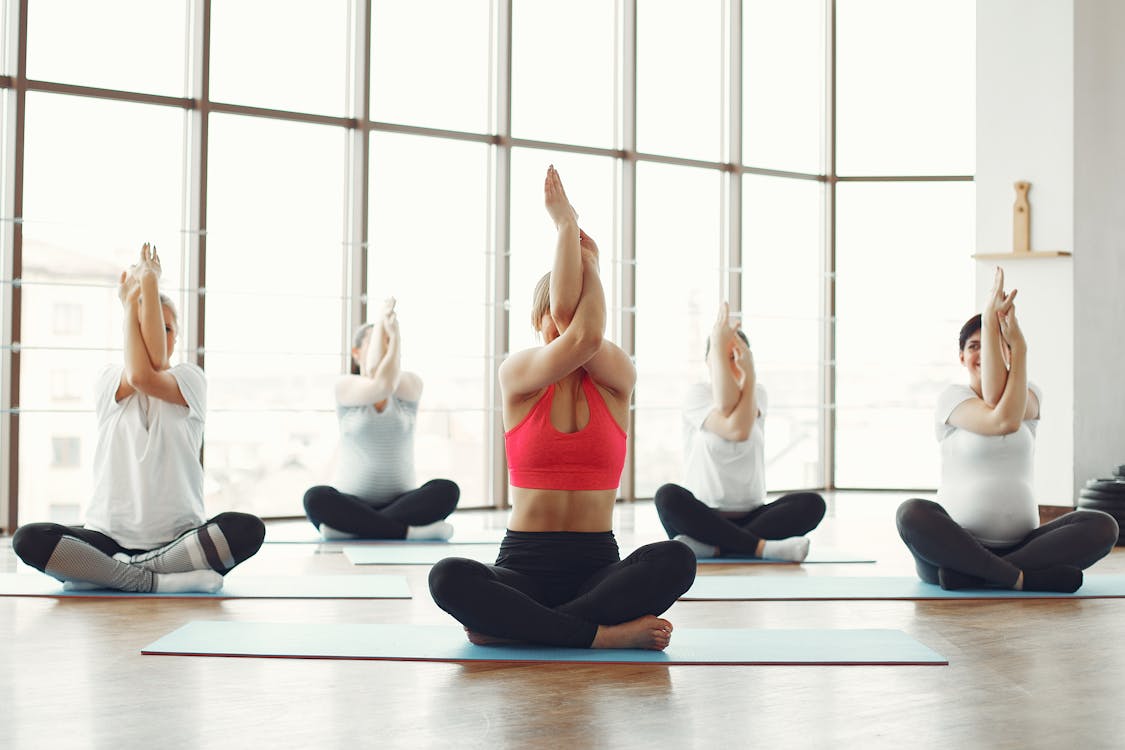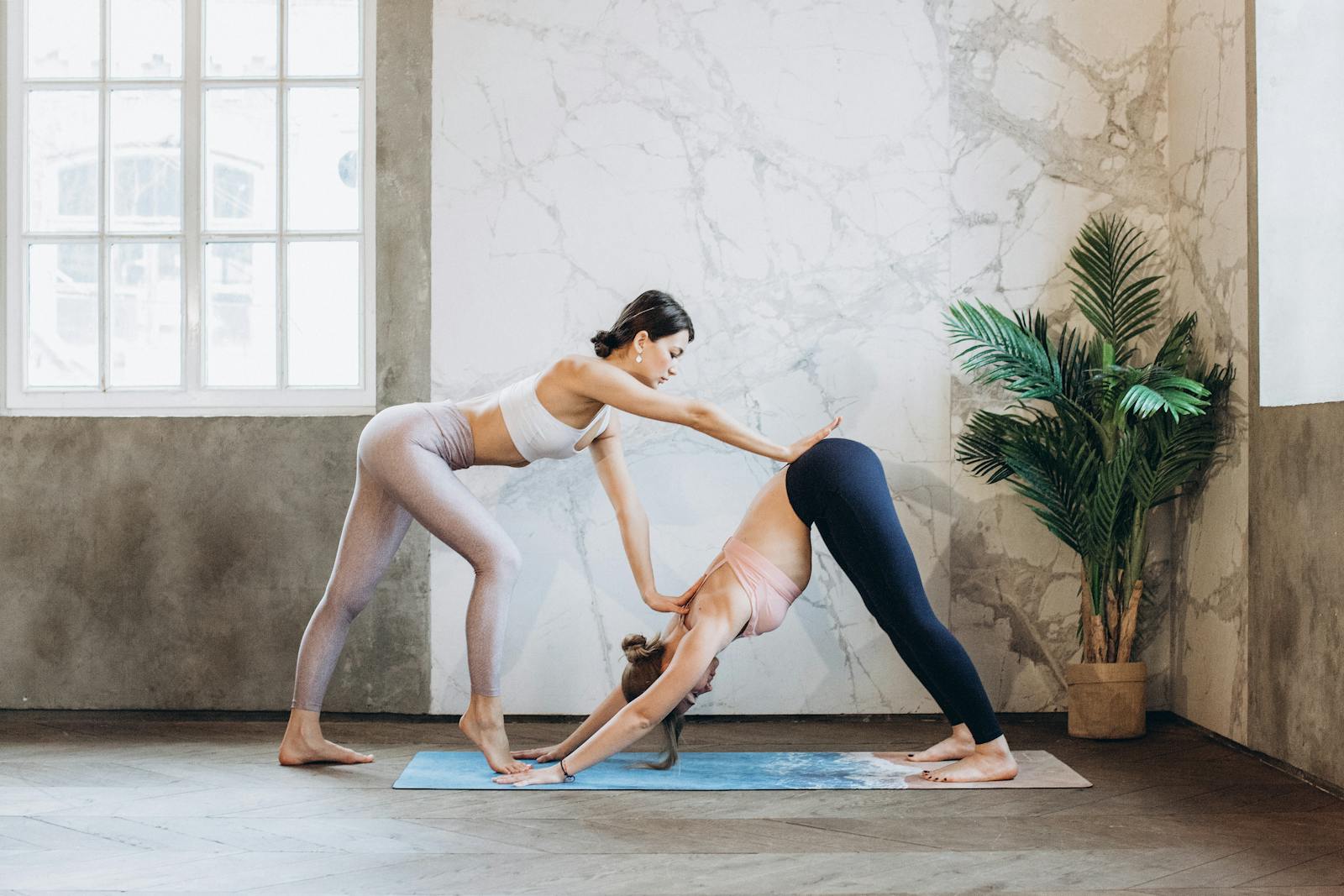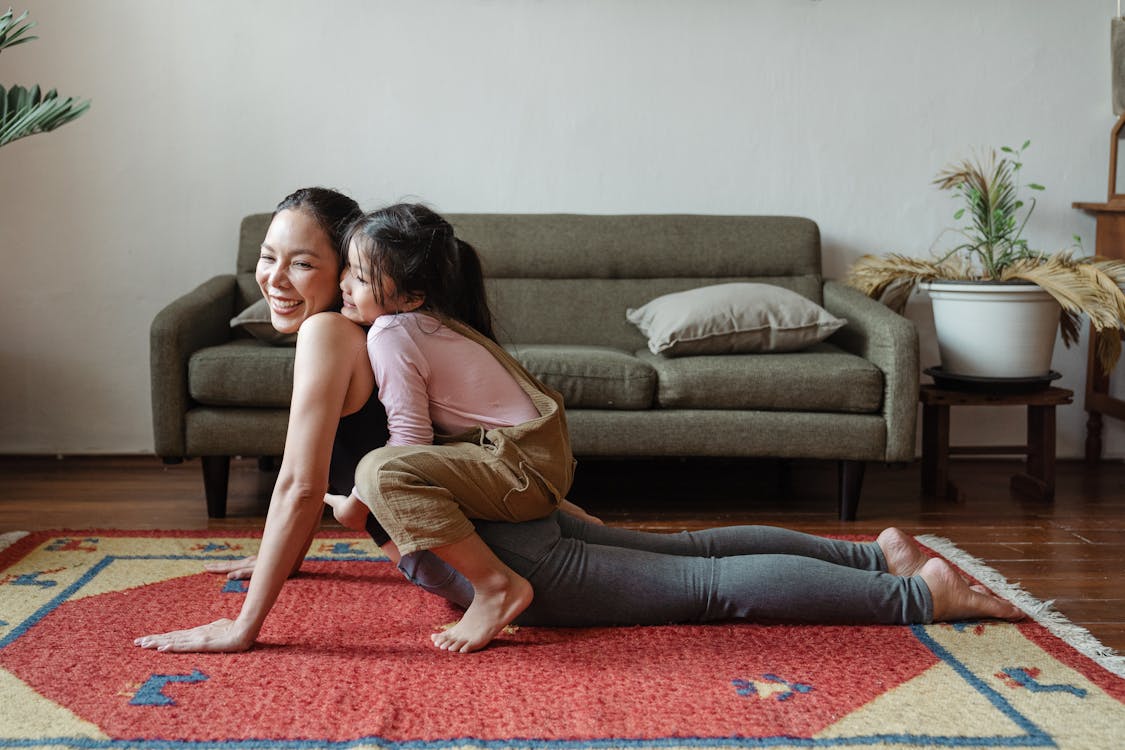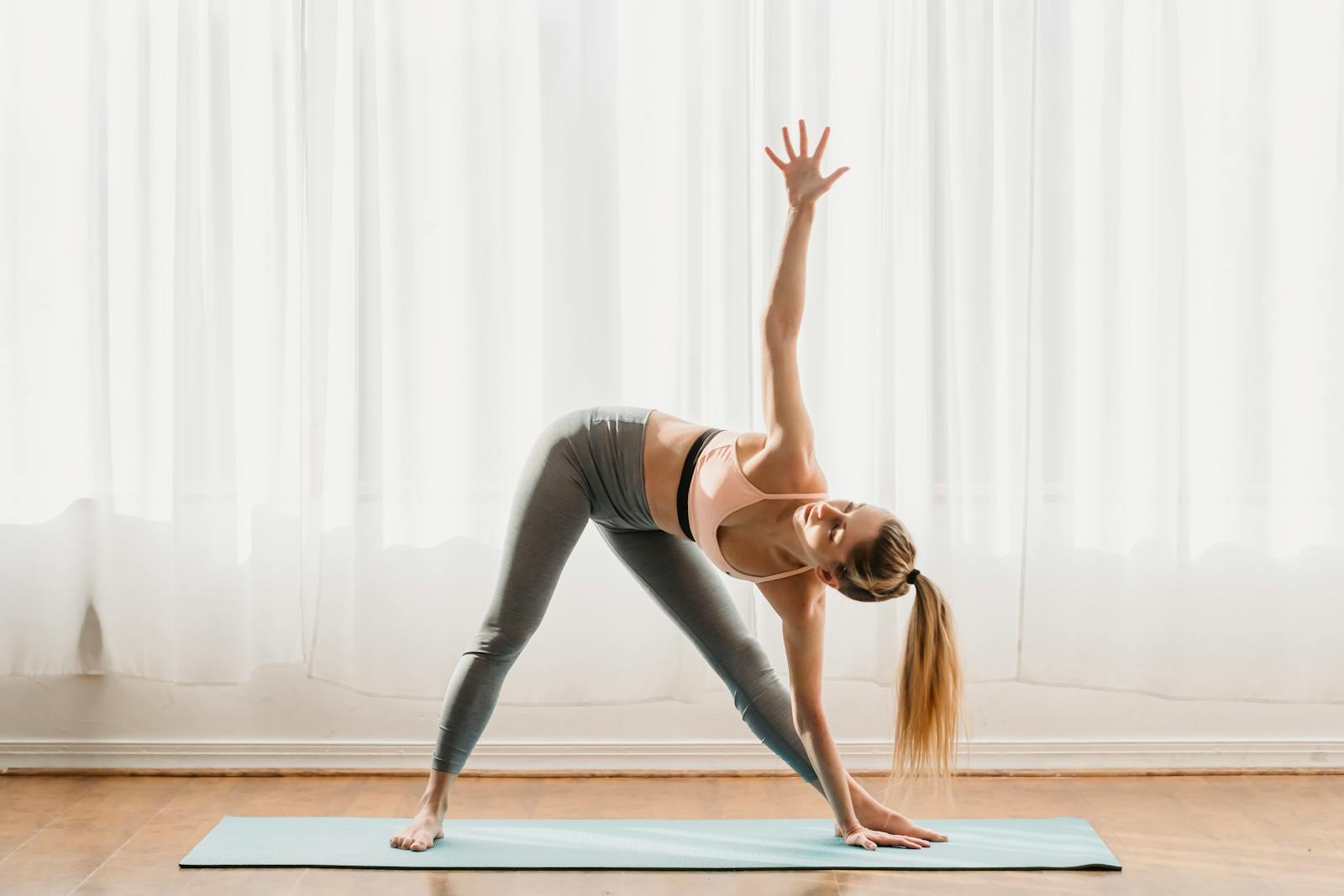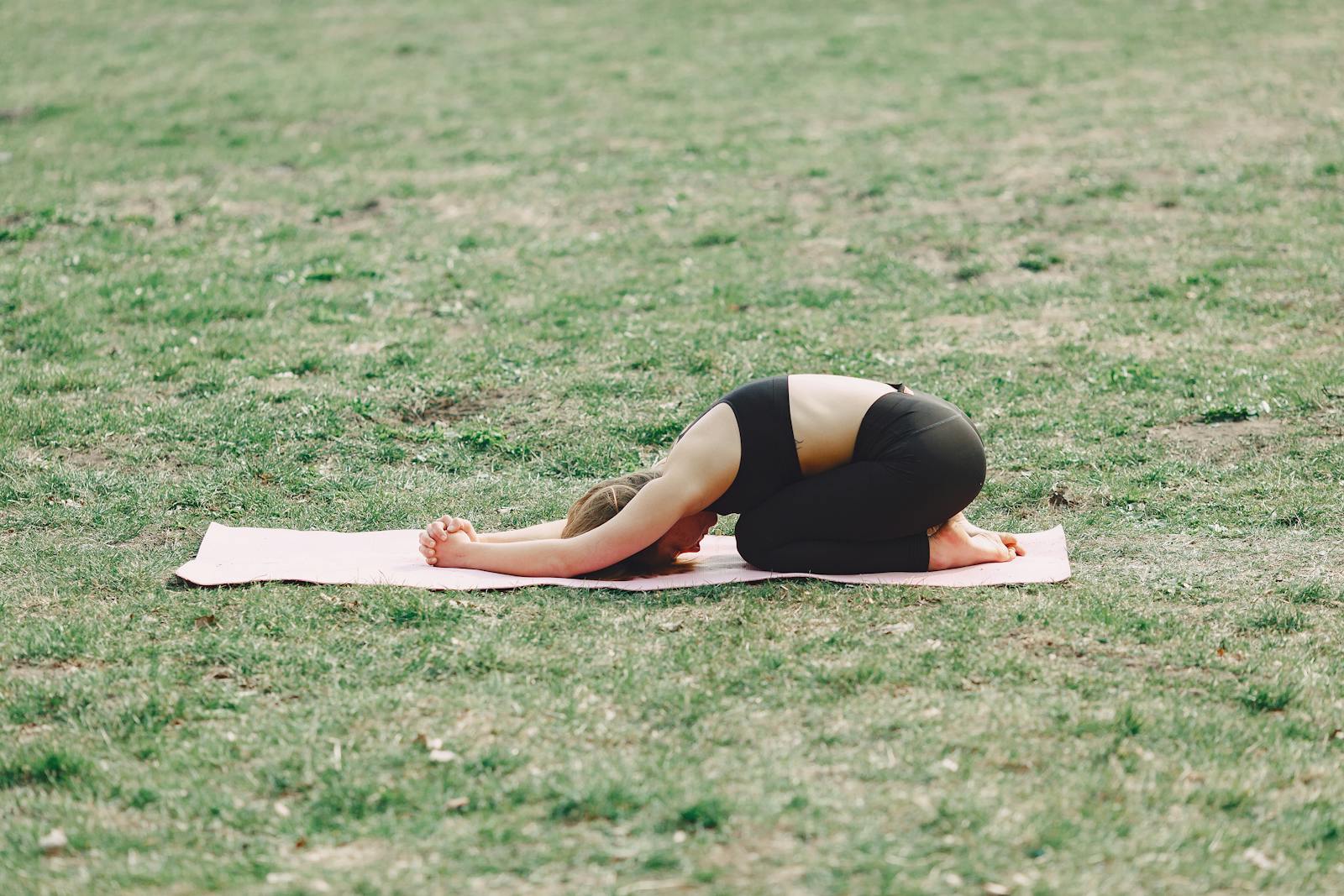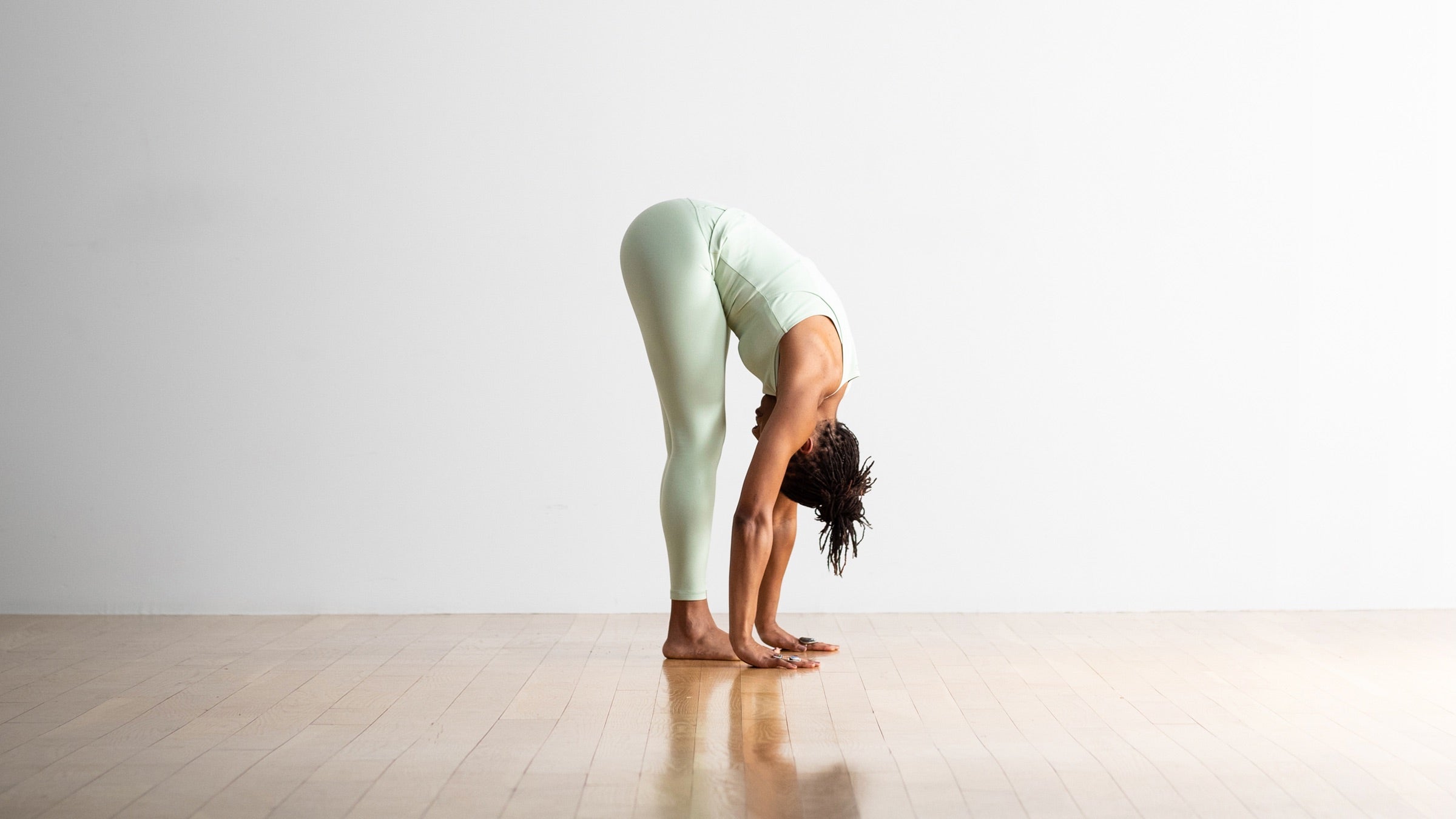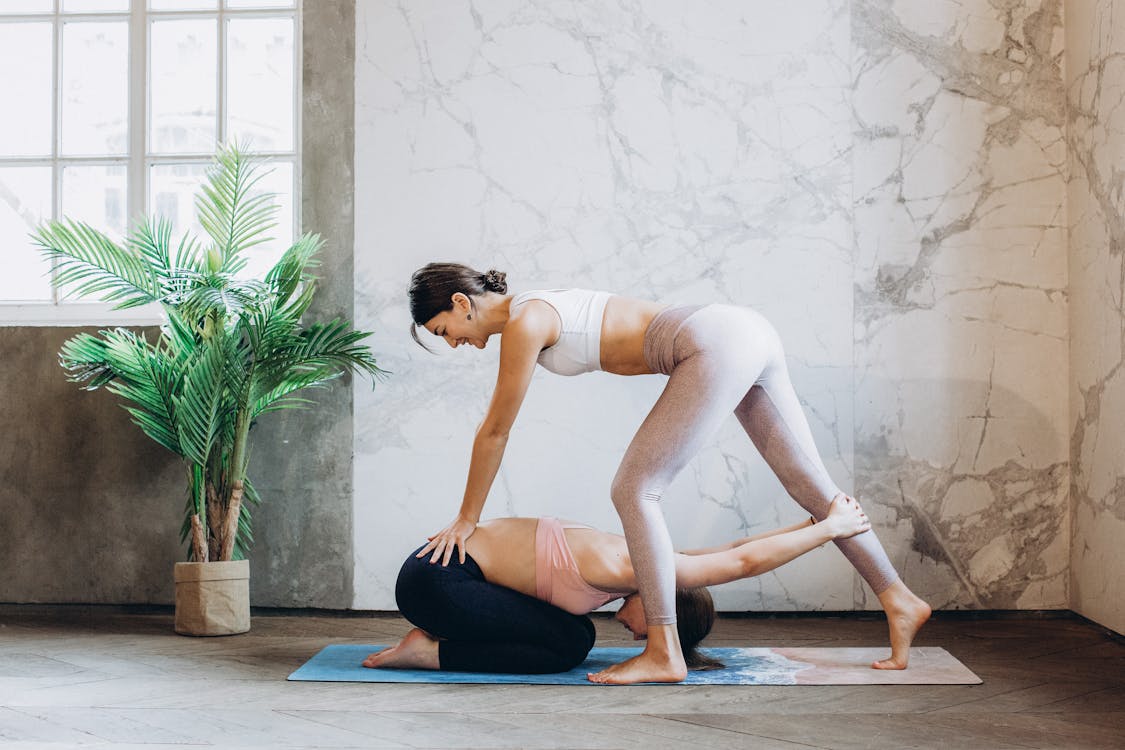
Are you struggling to fall asleep at night? Do you find yourself tossing and turning, unable to quiet your mind and relax your body? If so, you may want to consider trying yoga nidra, a form of guided meditation that has been shown to promote deep relaxation and improve sleep quality.
Yoga nidra, also known as yogic sleep, involves lying down in a comfortable position and following a series of guided visualizations and relaxation exercises. Unlike traditional meditation, which focuses on quieting the mind, yoga nidra aims to relax the body and mind simultaneously, helping you to enter a state of deep relaxation that is similar to sleep.
In addition to its sleep-promoting benefits, yoga nidra has been shown to have a number of other physiological, psychological, and spiritual benefits. For example, regular practice of yoga nidra has been linked to reduced stress and anxiety, improved mood, and increased feelings of well-being. It has also been shown to improve flexibility, balance, and overall physical health. In this article, we will explore the benefits of yoga nidra for sleep, as well as the best yoga poses for improving flexibility.
Key Takeaways
- Yoga nidra is a form of guided meditation that can promote deep relaxation and improve sleep quality.
- In addition to its sleep-promoting benefits, yoga nidra has been shown to have a number of other physiological, psychological, and spiritual benefits.
- Practicing yoga poses like forward bend, downward dog, and cobra pose can help improve flexibility and overall physical health.
Understanding Yoga Nidra
Yoga Nidra is a type of meditation that aims to induce a state of deep relaxation and rest. It is also known as yogic sleep or psychic sleep because it is believed to bring about the same benefits as regular sleep, but in a shorter amount of time.
During a Yoga Nidra practice, you lie down in a comfortable position and follow a guided meditation that takes you through different stages of relaxation. These stages may include body scanning, breath awareness, visualization, and affirmation. The goal is to reach a state of consciousness that is between waking and sleeping, known as the hypnagogic state.
One of the main benefits of Yoga Nidra is that it can help you reduce stress and anxiety. This is because it activates the parasympathetic nervous system, which is responsible for the body's rest and digest response. When activated, this system slows down the heart rate, lowers blood pressure, and relaxes the muscles. This can help you feel more calm and centered, even in the midst of a busy or stressful day.
Another benefit of Yoga Nidra is that it can improve your sleep quality. Research has shown that practicing Yoga Nidra before bedtime can help you fall asleep faster, stay asleep longer, and wake up feeling more refreshed. In fact, a 30-minute session of Yoga Nidra is said to be equivalent to two to four hours of regular sleep.
Overall, Yoga Nidra is a simple and effective way to promote relaxation and improve your overall well-being. By incorporating it into your daily routine, you may be able to reduce stress, improve sleep, and enjoy greater peace of mind.
The Science Behind Yoga Nidra for Sleep
Yoga Nidra is a powerful technique that can help you achieve deep relaxation and promote better sleep. The practice involves lying down in a comfortable position and following a guided meditation that takes you through different stages of relaxation.
Research has shown that Yoga Nidra can be an effective tool for improving sleep quality and reducing symptoms of insomnia. One study found that participants who practiced Yoga Nidra experienced significant improvements in sleep quality, including increased sleep duration and decreased wake time during the night.
The benefits of Yoga Nidra for sleep may be due to its ability to activate the parasympathetic nervous system, which is responsible for the body's rest and digest response. During the practice, you are guided to focus on your breath and sensations in your body, which can help calm the mind and reduce stress and anxiety.
In addition to its effects on sleep, Yoga Nidra has also been shown to have a range of other health benefits. These include reducing symptoms of depression and anxiety, improving mood, and increasing feelings of well-being.
Overall, the science behind Yoga Nidra for sleep suggests that it is a safe and effective tool for improving sleep quality and promoting relaxation. Whether you are struggling with insomnia or simply looking for a way to unwind and de-stress, Yoga Nidra may be worth exploring as a part of your self-care routine.
Benefits of Yoga Nidra
Yoga nidra, also known as yogic sleep, is a powerful meditation technique that offers several benefits to improve your overall well-being. Here are some of the benefits of practicing yoga nidra for sleep:
-
Reduces stress and anxiety: Yoga nidra has been shown to be effective in reducing stress and anxiety. A 2018 study published in the International Journal of Yoga found that yoga nidra was more effective than meditation at reducing both cognitive and physiological symptoms of anxiety.
-
Improves sleep quality: Yoga nidra can help you fall asleep faster and improve the quality of your sleep. A study published in the Journal of Ayurveda and Integrative Medicine found that yoga nidra improved the quality of sleep in patients with insomnia.
-
Boosts immune function: Yoga nidra can help boost your immune function by reducing stress and promoting relaxation. A study published in the Journal of Alternative and Complementary Medicine found that yoga nidra increased natural killer cell activity, which plays a key role in immune function.
-
Enhances creativity: Yoga nidra can help enhance your creativity by promoting relaxation and reducing stress. A study published in the Journal of Yoga and Physical Therapy found that yoga nidra improved creative performance in participants.
-
Reduces chronic pain: Yoga nidra can help reduce chronic pain by promoting relaxation and reducing stress. A study published in the Journal of Complementary and Integrative Medicine found that yoga nidra reduced pain intensity in patients with chronic lower back pain.
Overall, practicing yoga nidra regularly can offer several benefits to improve your overall well-being.
Physiological Benefits
Yoga Nidra has been found to provide numerous physiological benefits to the body. Here are some of them:
Reduces Stress and Anxiety
Yoga Nidra has been shown to reduce stress and anxiety levels in the body. It helps to activate the parasympathetic nervous system, which is responsible for calming the body down and reducing stress levels. This, in turn, helps to reduce anxiety levels and promotes relaxation.
Improves Sleep
Yoga Nidra is an effective way to improve sleep quality. It helps to relax the body and mind, which makes it easier to fall asleep and stay asleep. Research has shown that practicing Yoga Nidra for just 45 minutes can feel like getting three hours of sleep.
Lowers Blood Pressure
Yoga Nidra has been found to lower blood pressure levels in the body. This is because it helps to reduce stress levels, which is a major contributor to high blood pressure. Practicing Yoga Nidra regularly can help to keep blood pressure levels in check.
Boosts Immune System
Yoga Nidra has been shown to boost the immune system. It helps to reduce stress levels, which can weaken the immune system over time. By reducing stress levels, Yoga Nidra helps to strengthen the immune system, making it easier for the body to fight off infections and diseases.
Improves Digestion
Yoga Nidra can also improve digestion. It helps to activate the parasympathetic nervous system, which is responsible for regulating digestion. By activating this system, Yoga Nidra helps to improve digestion and reduce digestive problems such as bloating and constipation.
Overall, practicing Yoga Nidra regularly can provide numerous physiological benefits to the body. It can help to reduce stress and anxiety levels, improve sleep quality, lower blood pressure, boost the immune system, and improve digestion.
Psychological Benefits
In addition to the physical benefits, yoga nidra has several psychological benefits that can improve your overall well-being.
Reduces Stress and Anxiety
Yoga nidra is a powerful tool for reducing stress and anxiety. It allows you to enter a state of deep relaxation, which helps to calm your mind and reduce feelings of tension and anxiety.
A 2018 study published in the International Journal of Yoga found that yoga nidra was more effective than meditation at reducing both cognitive and physiological symptoms of anxiety.
Improves Sleep
One of the primary reasons people practice yoga nidra is to improve their sleep. Yoga nidra has been shown to help people fall asleep faster, stay asleep longer, and wake up feeling more refreshed.
A study published in the Journal of Ayurveda and Integrative Medicine found that practicing yoga nidra for 45 minutes before bed improved sleep quality in people with insomnia.
Boosts Mood
Yoga nidra can also help to boost your mood and reduce symptoms of depression. It does this by promoting the production of serotonin, a neurotransmitter that regulates mood, appetite, and sleep.
A 2019 study published in the Journal of Traditional and Complementary Medicine found that practicing yoga nidra for 20 minutes daily for six weeks significantly improved symptoms of depression in participants.
Increases Mindfulness
Yoga nidra is a form of mindfulness meditation, which means it can help to increase your awareness and attention. By practicing yoga nidra regularly, you can become more mindful in your daily life, which can help you to feel more present and engaged.
A 2017 study published in the Journal of Education and Practice found that practicing yoga nidra improved mindfulness and reduced stress in college students.
Spiritual Benefits
In addition to the physical and mental benefits of yoga nidra, there are also spiritual benefits that can be experienced through regular practice. Here are a few of the spiritual benefits of yoga nidra:
-
Increased self-awareness: Yoga nidra allows you to connect with yourself on a deeper level and become more aware of your thoughts, emotions, and beliefs. This increased self-awareness can help you make positive changes in your life and improve your relationships with others.
-
Greater sense of inner peace: By quieting the mind and releasing tension from the body, yoga nidra can help you experience a greater sense of inner peace and calm. This can be especially helpful if you struggle with anxiety or stress.
-
Connection with the divine: Many people who practice yoga nidra report feeling a deeper connection with the divine or a higher power. This can be a powerful experience that can help you feel more grounded and connected to something greater than yourself.
-
Improved intuition: As you become more self-aware and connected with the divine, you may also notice an improvement in your intuition. This can help you make better decisions and navigate life with greater ease and confidence.
Overall, the spiritual benefits of yoga nidra can be just as powerful as the physical and mental benefits. By incorporating yoga nidra into your regular practice, you can experience a greater sense of inner peace, connection, and self-awareness.
Best Yoga Poses for Flexibility
Yoga is an excellent way to improve your flexibility and range of motion. The following yoga poses are great for beginners and advanced practitioners alike:
1. Downward Facing Dog
This pose is great for stretching your hamstrings, calves, and spine. Begin on your hands and knees, with your wrists under your shoulders and your knees under your hips. Lift your hips up and back, straightening your legs and bringing your body into an inverted V-shape. Keep your hands shoulder-width apart and your feet hip-width apart.
2. Cobra Pose
This pose is great for stretching your chest, shoulders, and abdomen. Begin lying on your stomach with your hands under your shoulders. Slowly lift your chest and head off the ground, keeping your elbows close to your body. Hold the pose for a few breaths and then release.
3. Triangle Pose
This pose is great for stretching your hips, hamstrings, and spine. Begin standing with your feet hip-width apart. Turn your right foot out 90 degrees and your left foot in slightly. Extend your arms out to the sides and bend to the right, placing your right hand on your shin or ankle and reaching your left arm up towards the ceiling. Hold the pose for a few breaths and then switch sides.
4. Pigeon Pose
This pose is great for stretching your hips and glutes. Begin on your hands and knees and bring your right knee forward, placing it behind your right wrist. Extend your left leg behind you and lower your body down onto your forearms. Hold the pose for a few breaths and then switch sides.
5. Child's Pose
This pose is great for stretching your back, hips, and thighs. Begin on your hands and knees and sit back onto your heels, stretching your arms out in front of you. Rest your forehead on the ground and hold the pose for a few breaths.
Incorporating these yoga poses into your routine can help improve your flexibility and overall physical health. Remember to always listen to your body and never push yourself beyond your limits.
Forward Bend
The forward bend is a yoga pose that can help relieve tightness in the back of your legs and low back, which can often disturb your sleep. Here's how to do it:
- Sit on the floor or your bed with your legs stretched out long, keeping as much of a bend in your knees as you need to feel comfortable.
- Inhale and reach your arms up overhead.
- Exhale and fold forward from your hips, keeping your spine long.
- Reach your hands towards your feet, or rest them on your shins or thighs.
- Stay here for a few breaths, then inhale and slowly roll back up to a seated position.
You can also modify this pose by using props, such as a bolster or blocks, to support your head and torso. This can help you relax more deeply and hold the pose for longer.
In addition to improving flexibility, the forward bend can also calm your mind and relieve stress. It's a great pose to try before bed to help you unwind and prepare for sleep.
Downward Dog
One of the most recognized yoga poses is the Downward Dog. It is a standing pose that stretches the entire body, and it is great for improving flexibility, strength, and balance.
To perform the Downward Dog, start on your hands and knees with your wrists directly under your shoulders and your knees under your hips. Spread your fingers wide and press your palms into the ground. Tuck your toes under and lift your hips up towards the ceiling, straightening your arms and legs. Your body should form an inverted V-shape. Keep your head and neck relaxed and look towards your belly button.
The benefits of the Downward Dog pose are numerous. It stretches the hamstrings, calves, and spine, while also strengthening the arms, shoulders, and back. It can also help relieve stress and anxiety, improve digestion, and increase circulation.
If you are new to yoga or have any injuries or limitations, it is important to modify the pose to suit your needs. You can use blocks or a chair to support your hands, or bend your knees slightly to reduce the strain on your hamstrings.
Incorporating the Downward Dog pose into your yoga practice can help improve your overall flexibility and strength, while also providing a calming and grounding effect on the mind and body.
Cobra Pose
Cobra pose, also known as Bhujangasana, is a popular yoga pose that can help improve flexibility and strength in your back, shoulders, and arms. Here are some benefits of practicing cobra pose:
-
Stretches your spine: Cobra pose is a great way to stretch your spine and relieve any tension or stiffness in your back. It can also help improve your posture and reduce any discomfort you may be experiencing.
-
Strengthens your arms and shoulders: As you lift your chest off the ground, you engage your arms and shoulders, which helps strengthen these muscles over time. This can be especially beneficial if you spend a lot of time sitting at a desk or hunched over a computer.
-
Relieves stress and fatigue: Cobra pose is a gentle backbend that can help calm your mind and reduce stress and fatigue. It can also help improve your mood and leave you feeling more energized and focused.
To practice cobra pose, follow these steps:
- Lie face down on your mat with your hands under your shoulders and your elbows close to your body.
- Inhale and lift your chest off the ground, using your hands to support your weight.
- Keep your shoulders relaxed and your gaze forward.
- Hold the pose for a few breaths, then exhale and release back down to the ground.
Remember to listen to your body and only go as far as feels comfortable for you. If you have any back or shoulder injuries, it's best to consult with a healthcare professional before attempting cobra pose.
Practicing Yoga Nidra and Flexibility Poses Safely
When practicing yoga nidra and flexibility poses, it is important to do so safely to avoid injury and to maximize the benefits of the practice. Here are some tips to help you practice safely:
Start Slowly
If you are new to yoga nidra or flexibility poses, start slowly and gradually increase the intensity and duration of your practice. Listen to your body and do not force yourself into any poses that feel uncomfortable or painful.
Warm Up
Before starting any yoga practice, it is important to warm up your body. This can be done through gentle stretches or a few rounds of sun salutations. Warming up helps to prepare your body for the more intense poses that will come later in the practice.
Use Props
Props such as blocks, straps, and blankets can be used to help support your body and make poses more accessible. For example, a block can be placed under your hand to help you reach the ground in a forward fold, or a strap can be used to help you deepen your stretch in a seated forward bend.
Focus on Alignment
Proper alignment is crucial in yoga nidra and flexibility poses to avoid injury and to get the most benefit out of the pose. Pay attention to your body and make adjustments as needed to ensure that you are in proper alignment.
Listen to Your Body
The most important thing when practicing yoga nidra and flexibility poses is to listen to your body. If a pose feels uncomfortable or painful, back off or modify the pose. Remember that yoga is not a competition, and there is no need to push yourself beyond your limits.
By following these tips, you can practice yoga nidra and flexibility poses safely and effectively, and enjoy all of the benefits that these practices have to offer.
Frequently Asked Questions
What is the difference between Yoga Nidra and meditation?
Yoga Nidra is a form of guided meditation that is practiced lying down in a comfortable position, while meditation can be practiced sitting or in any other posture. Yoga Nidra is a systematic relaxation technique that takes you through different stages of consciousness, while meditation is a practice of focusing your mind on a particular object or thought.
What are the benefits of practicing Yoga Nidra?
Yoga Nidra has numerous benefits, including reducing stress and anxiety, improving sleep quality, enhancing concentration and focus, boosting creativity and intuition, and promoting overall physical and mental well-being. It is also known to help with chronic pain, depression, and PTSD.
What are the best yoga poses for improving flexibility?
Some of the best yoga poses for improving flexibility include downward-facing dog, pigeon pose, butterfly pose, seated forward bend, and cobra pose. These poses can help stretch and strengthen your muscles, improve your range of motion, and reduce the risk of injury.
Can Yoga Nidra be practiced before bed?
Yes, Yoga Nidra can be a great way to relax and unwind before bed. It can help calm your mind, release tension and anxiety, and prepare your body for a restful night's sleep. However, it is recommended to practice at least 2-3 hours before bedtime to allow your body to fully relax.
Is there scientific research supporting the benefits of Yoga Nidra?
Yes, there is scientific research that supports the benefits of Yoga Nidra. Studies have shown that Yoga Nidra can help improve sleep quality, reduce stress and anxiety, and enhance overall well-being. It has also been found to have positive effects on brain function, immune system, and cardiovascular health.
What is the equivalent of 30 minutes of Yoga Nidra practice?
30 minutes of Yoga Nidra practice is said to be equivalent to 2-4 hours of deep sleep. It can help you feel refreshed and rejuvenated, and provide you with the energy and focus you need to tackle your day.

